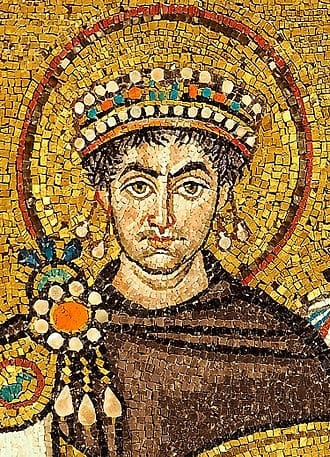
Justinian I
Justinian I (; Latin: Flavius Petrus Sabbatius Iustinianus; Greek: Ἰουστινιανός, translit. Ioustinianós; 482 – 14 November 565), also known as Justinian the Great, was the Byzantine emperor from 527 to 565.
His reign is marked by the ambitious but only partly realized renovatio imperii, or “restoration of the Empire”. This ambition was expressed by the partial recovery of the territories of the defunct Western Roman Empire. His general, Belisarius, swiftly conquered the Vandal Kingdom in North Africa. Subsequently, Belisarius, Narses, and other generals conquered the Ostrogothic kingdom, restoring Dalmatia, Sicily, Italy, and Rome to the empire after more than half a century of rule by the Ostrogoths. The praetorian prefect Liberius reclaimed the south of the Iberian peninsula, establishing the province of Spania. These campaigns re-established Roman control over the western Mediterranean, increasing the Empire’s annual revenue by over a million solidi. During his reign, Justinian also subdued the Tzani, a people on the east coast of the Black Sea that had never been under Roman rule before. He engaged the Sasanian Empire in the east during Kavad I’s reign, and later again during Khosrow I’s; this second conflict was partially initiated due to his ambitions in the west.
A still more resonant aspect of his legacy was the uniform rewriting of Roman law, the Corpus Juris Civilis, which is still the basis of civil law in many modern states. His reign also marked a blossoming of Byzantine culture, and his building program yielded works such as the Hagia Sophia. He is called “Saint Justinian the Emperor” in the Eastern Orthodox Church. Because of his restoration activities, Justinian has sometimes been known as the “Last Roman” in mid-20th century historiography.

